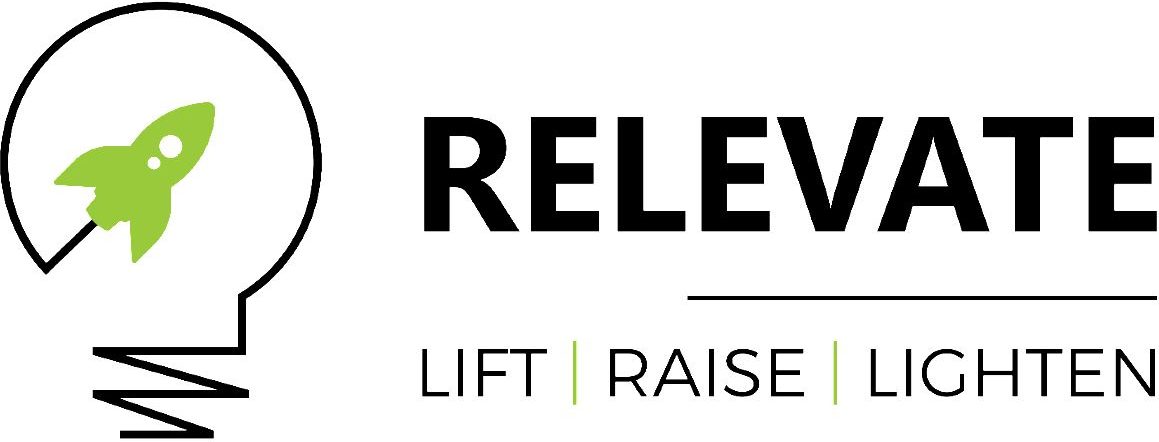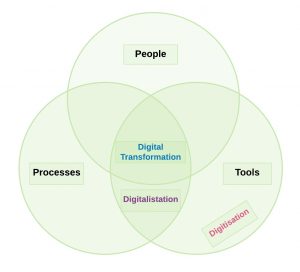Customer service is now more of a strategic priority than an afterthought, with the potential to directly affect profits and differentiate your company from the competition. Nearly half of all consumers say they would pay more for products or services if they knew they could count on receiving excellent customer care.
A company’s products or services, marketing strategy, sales procedure, customers, and more are all affected by customer service and support. Because of how important they are to the satisfaction of your customers as a whole, it is essential that you track the results of your customer service and support operations.
You can expect to gain an understanding of the metrics for customer service and support that can be used to gauge and enhance the quality of your interactions with customers as you read through this guide.
Quantitative Measures of Customer Service
Estimated Number of Attendees
Issue Resolution Rate Number of Interactions Per Ticket Average Time to Resolve a Ticket Response Time to Respond to a Ticket Backlog Average Time to Respond to a Ticket Number of Interactions Per Ticket
Customers’ Pleasure With Their Preferred Method of Contact
The following metrics for customer service and support are key performance indicators (KPIs) that can help you gauge the effectiveness of your teams.
Don’t know where to start with tracking, measuring, and analysing all these metrics? Don’t fret; the market is rife with products designed to facilitate communication with and support for customers.
A Help Desk and Ticketing tool is included in Relevate Service Hub to help you keep track of customer requests, allowing your team to stay organised, find solutions quickly, and analyse enquiry data to boost efficiency.
Standard Ticket
The average ticket count is a useful metric for understanding how many support or service requests your team typically handles. These metrics can be tracked on a regular basis, such as once per day, week, month, quarter, or year.
What the Typical Number of Tickets Sold Reveals About Your Event
More tickets may seem like a good sign that your customer service system is easily accessible and functioning, but they may also indicate that your product isn’t meeting customers’ needs.
When calculating your typical ticket sales, what should you be on the lookout for?
As the number of tickets decreases, the number of issues reported by customers should decrease as well.
Ways to Raise Your Typical Sale Price Per Ticket
It’s important to let the product and marketing teams know what customers are thinking and feeling so they can better address their concerns. It’s important to have a sufficient number of customer service reps on hand to deal with the incoming ticket volume.
Number of Open Tickets
Your ticket backlog is the number of open tickets that have not yet been addressed by your support staff. In addition to being measured against hourly, weekly, and monthly benchmarks, this metric can also be measured against daily, weekly, and monthly targets.
In other words, there is no universal definition of what constitutes a backlog. Any tickets that have not been resolved after the allotted response and resolution times are considered backlogged. In customer service, speed isn’t the most important metric, but it is essential to providing a good experience for the customer (as you’ll see in a few of the metrics below).
Data from Overdue Tickets Reveals
How quickly your team reaches, responds to, and resolves tickets, as well as how quickly tickets are coming in from customers, can all be communicated with this metric.
Tips for Analyzing Your Support Request Queue
A smaller number of open tickets indicates that your team is responding quickly and effectively.
Reducing Your Support Request Queue
Familiarize yourself with every step of the process involved in providing service to your customers. What kinds of roadblocks prevent your representatives from opening a new ticket because of delays caused by those snags? Considering the number of tickets you’ll be getting, do you have enough people to handle them?
Response Time
To determine how long a customer has to wait before being assisted, you can track how long it takes for a member of your customer service team to provide their first response to a new ticket or enquiry.
Speed isn’t everything in customer service, but it does make a difference and make the interaction more pleasant for everyone involved. Customers today anticipate prompt resolutions, ideally within 24 hours and across all channels.
What Your First Response Time Reveals This metric reveals how quickly your customer service department opens new tickets and replies to customers.
Checklist for Evaluating Your Reaction Time
- Expect a more positive customer experience as a result of shorter wait times.
Tips for Quicker Reaction Times
Make sure there are no roadblocks preventing your team from creating new tickets and responding to customers. - Ensure that even brand-new customers’ questions are answered by encouraging your team to juggle multiple tickets at once.
- Keep in mind the importance of having enough people on staff to deal with all of the tickets that come in.
- First-Attempt Compromise
- Your team’s FCR rate is the percentage of tickets that were closed after the initial response to a customer’s enquiry.
This metric is crucial because it shows how well your team communicates with customers and how much data you gather from them in the first contact.
Greater customer satisfaction has also been found to be directly related to FCR. According to research conducted by Oracle, an increase of just 1% in FCR results in a 1% rise in customer satisfaction. Now more than ever, people are looking for quick answers that still hold up under scrutiny.
Please be aware that not all problems can be resolved with a First Contact Resolution (FCR), especially if the customer made a mistake or if your representative needed to get input from the product or IT departments. As an alternative to including all tickets in your total, you can use the following formula to determine this.
Tickets Purchased Through the FCR Program as a Percentage of All Tickets Eligible for the FCR Program ( percent )
Insights Gained From Examining Your FCR Rate
Measuring this will give you insight into how well your customer service team is communicating with and trying to help their customers. In addition, it reveals how precise your pre-contact customer service instructions are (i.e. what information you need from a customer to help them out).
How to Evaluate Your FCR Rate
Keep an eye out for a high FCR rate, which indicates that your customer service team is conveying their needs clearly and that customers are providing the information they were asked to provide.
The Proper Way to Raise Your FCR
What do you tell clients you need from them in order to get help? What information do you require from people before they can contact you via email, social media, or phone, and what specific instructions do you provide when they do? Ideally, your customer service team would only need to respond once to a customer’s initial enquiry if they had all the information they needed at the time of contact.
Fifth, the Typical Response Delay
The average response time measures how long it takes for a representative to reply to a ticket opened by a customer. This KPI gauges both the average speed with which tickets are resolved and the speed with which they are being opened and closed.
What Your Typical Reaction Time Reveals About You
The speed with which your customer service team resolves issues and replies to customers can be gauged using this metric.
What to Look for in Your Mean Reaction Time
The quicker you can resolve a customer’s issue, the more satisfied they are likely to be.
Learn How to Reduce Your Typical Response Time
Make sure your group has everything they need to address problems and address concerns. It will take longer to respond to customers if they have to get answers or solutions from a manager, trainer, or product expert. Verify that your team is effectively managing the number of open tickets, whether it be one, five, or ten. Too much work could cause delays in your customer service procedure if your staff is overworked.
6 Interactions Per Ticket
How often your customer service representatives communicate with customers while a ticket is open is quantified by the number of interactions per ticket. It’s a metric that measures the number of interactions required to resolve a customer’s issue after they’ve contacted your team.
Interpreting the Number of Interactions Per Ticket This metric reveals the efficacy of each message or interaction from your customer service team.
How to Track Customers’ Activity on Each Ticket
The fewer the interactions per ticket, the more your team is communicating, asking the right questions, and working together to find solutions quickly.
Maximizing Your Contacts Per Ticket
Encourage your customer service and support staff to speak clearly and ask pertinent follow-up questions. Request that they persuade clients to provide detailed descriptions of their problems so that your team can resolve those issues as rapidly as possible… and with less back-and-forth.
Typical Time to Close a Support Ticket
How long it takes your team, on average, to resolve a customer service or support ticket is your average ticket resolution time.
What the Average Time to Resolve a Ticket Reveals This metric reveals information about the effectiveness of your customer service team and, perhaps, the difficulty of issues reported by customers.
Tips for Calculating an Accurate Average Ticket Resolution Time
Keep an eye out for fast turnaround times, which indicate that problems are being solved for customers and that they are leaving satisfied.
How to Reduce the Time It Takes to Solve Support Requests
Examine the greeting card your company gives to each new client. Make sure it prompts the customer to provide a thorough description of the issue by asking probing questions. Make sure they know what they’re talking about when it comes to your products and services so they can respond and solve problems quickly without having to involve other groups.
The Percentage of Resolved Tickets
How many tickets are closed as resolved compared to how many are still open is your issue resolution rate. This metric is also tracked over time intervals such as days, weeks, and months.
Daily, weekly, and monthly ticket backlogs can be viewed in relation to your ticket resolution rate. Whether a team has a high or low ticket resolution rate depends on the other metrics you use to measure its performance, such as the size of its ticket backlog, the average response time, etc. To determine the rate at which tickets are closed, use the following formula:
Tickets closed as a percentage of tickets opened multiplied by 100 equals the ticket resolution rate ( percent )
What Your Ticket Resolution Rate Reveals This metric reveals how rapidly and effectively your customer service team resolves tickets.
A Checklist for Evaluating Your Ticket-Closing Success Rate
If the rate is high, it means that fewer tickets are going unanswered.
The Best Practices for Quicker Ticket Closure
A sufficient number of staff members must be available to process incoming tickets. Is there anything besides their current workload that’s preventing your agents from taking on new tickets?
Method of Contact Preference
More than a metric, the prefered communication channel is simply an observation about how your customers like to get in touch with you. Keep track of the various ways in which your customers get in touch with you to ask questions or air their grievances, including email, live chat, social media, a web form, and the phone.
This Is What Your Preferred Method of Contact Reveals About You
Insights like these reveal the best means of contact between your company and its customers.
What to Look for to Determine the Quality of Your Preferred Method of Contact
Remember that you’re not aiming for a specific medium, but rather to observe and respond to your customers’ habits and routines. Use them as a foundation for your research into how to better serve and support your clientele.
Ways to Boost the Quality of Your Preferred Method of Contact
There is no way to improve this metric; however, you can enhance your customer service by paying close attention to which channels your customers use most frequently and then optimising those channels.
Optimal Customer Happiness Rate
How happy your clients are with your service or help is quantified by their level of satisfaction. The most common way to gauge customer satisfaction is to have them fill out a short survey after receiving your service, where they can give you a thumbs up or down on their experience. However you choose to gather this information, know that it is crucial.
What Customer Satisfaction Reveals This metric, arguably the most important, reveals how efficient, helpful, and pleasant your customer service team was, as well as whether or not the customer’s issue was resolved to their satisfaction. It could also predict, based on the questions you ask, whether or not they would get back to you with a question or concern.
Methods for Assessing Client Happiness
Keep an eye out for enthusiastic feedback; it’s a sign of happy customers and an efficient support staff. Even constructive criticism can be useful because it highlights areas where you fall short.
The Key to Happier Clients
Pay attention to what the market is telling you. If the post-service survey you administer doesn’t allow for free-form responses, it might be worthwhile to contact respondents who gave your service a low rating to find out why they gave you a thumbs-down.
The Customer Feedback tool in the Relevate Service Hub helps you gain insight into your customers’ perspectives and identify areas for improvement, ultimately increasing the likelihood that they will continue to use your services.
Nota bene: many organisations use success and satisfaction metrics related to customers as part of their scoring for customer service and support. Their Net Promoter Score (NPS), as well as their retention and churn rates, are examples of such metrics. We’ve laid out the specifics of both customer success metrics and customer satisfaction metrics in their own blog posts, and it’s up to you to determine how best to categorise them.
All of these metrics help paint a picture of how your customers perceive your company as a whole.
Keep tabs on your customer service in order to provide the best possible service. Possible
Supporting and serving customers is a multifaceted and interdisciplinary role. The problems, questions, and complaints that customers have about your company and its products or services are handled by these teams.
There aren’t any hard and fast metrics for measuring customer satisfaction because of this, but that doesn’t mean it isn’t still important to do so. In fact, it’s one of the most direct customer touchpoints, making it arguably the most important factor to measure.
Happy customers are your best form of advertising, so it makes sense to invest in a customer service department that can keep them satisfied. Make use of these KPIs to enhance your customer service and support operations and, in turn, your company’s bottom line.





